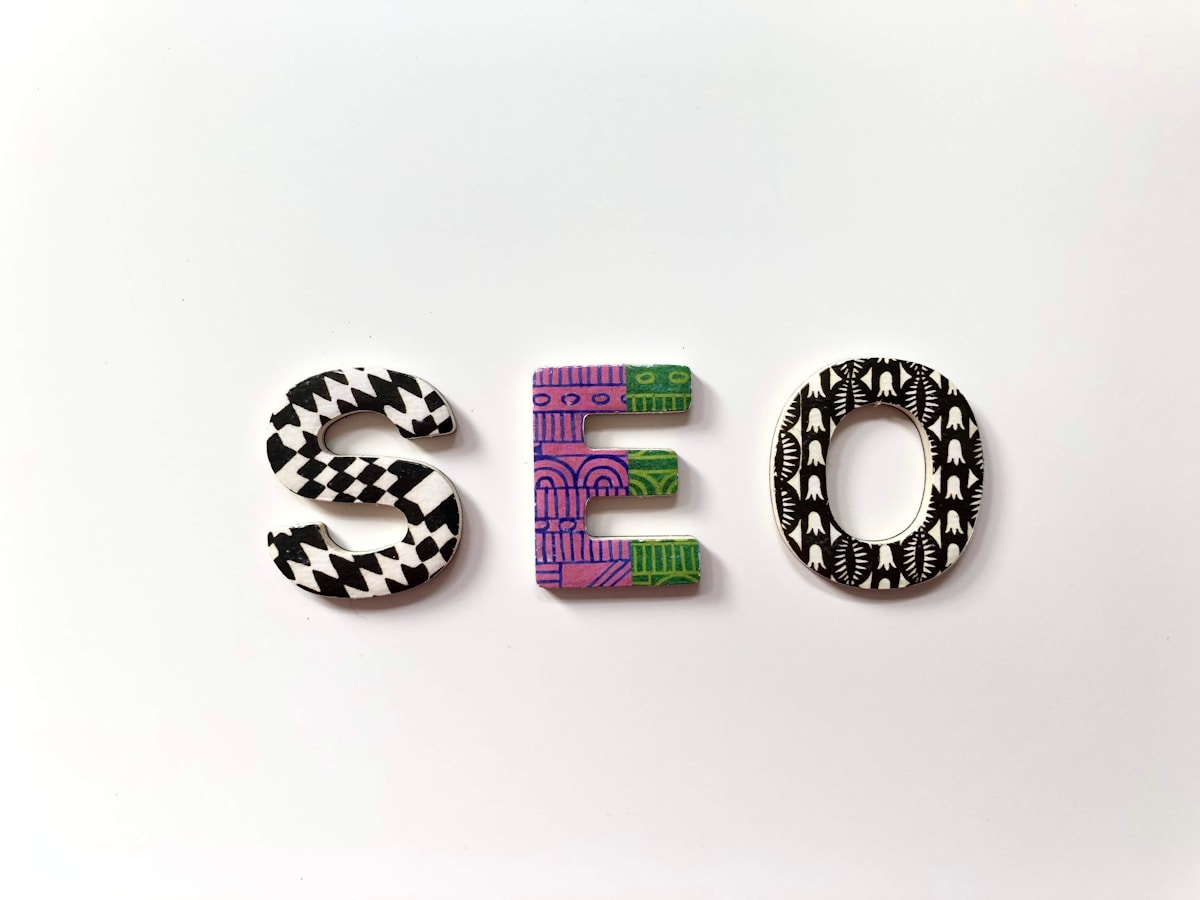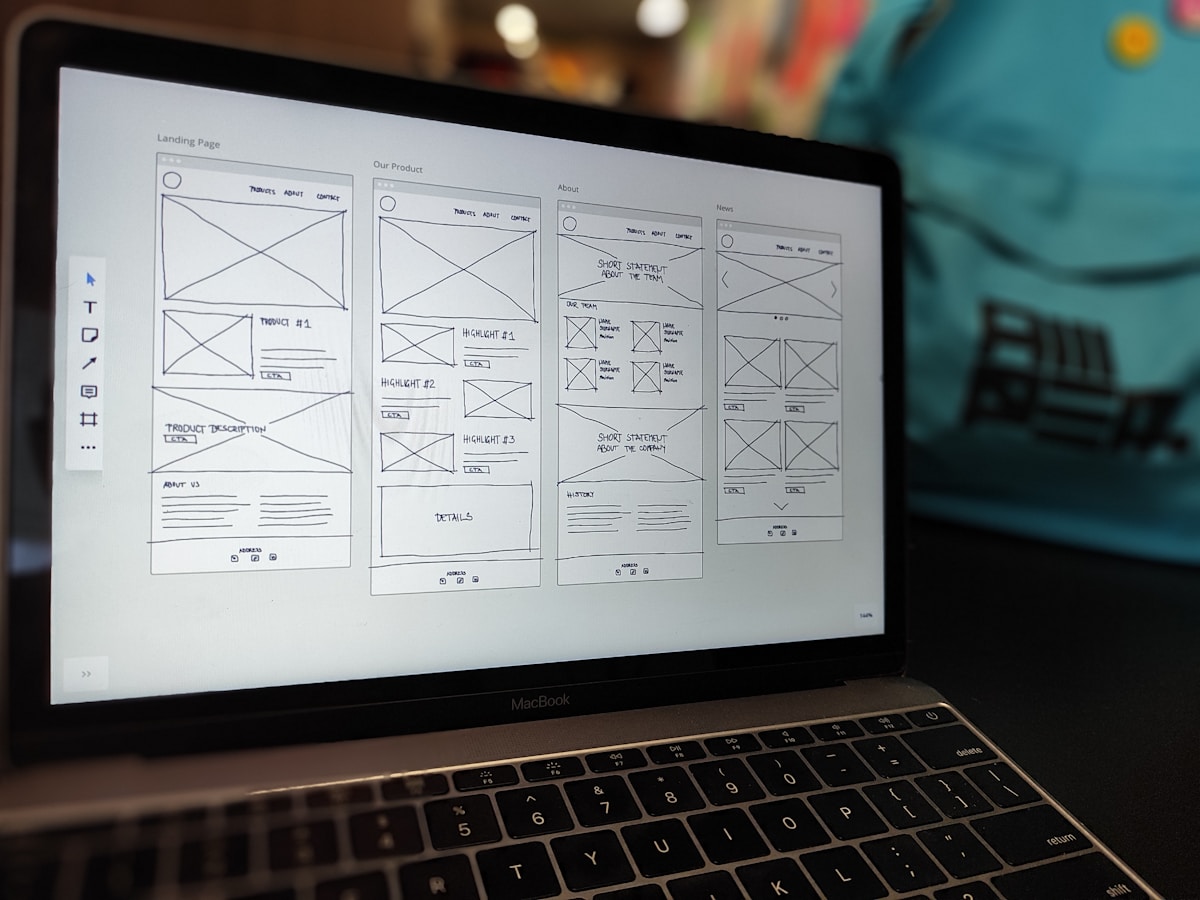A Fresh Start Online: The Power Of Website Redesign For Business Growth
A Fresh Start Online: The Power Of Website Redesign For Business Growth

In today's digital age, having a strong online presence is crucial for businesses to thrive. A website serves as the virtual storefront, making it essential to create a positive first impression on potential customers. However, as technology advances and design trends evolve, it becomes necessary to give your website a fresh start through redesigning.
The Importance Of A Fresh Start Online
A website redesign offers numerous benefits for businesses looking to grow their online presence. It allows you to modernize your website's look and feel, ensuring that it aligns with current design standards and user expectations. A fresh start online can help captivate visitors' attention, enhance the user experience, and drive more conversions.
The Power Of Website Redesign For Business Growth
Website redesigning plays a pivotal role in driving business growth. Revamping your website can improve its functionality, navigation, and overall performance. Website redesigning helps attract more organic traffic but also increases customer engagement and satisfaction. A well-designed website has the potential to establish credibility, build trust with visitors, and ultimately boost sales.
How Strikingly Can Help
Regarding website redesigning, Strikingly is an invaluable tool that can simplify your process. With its intuitive drag-and-drop interface and customizable templates, Strikingly empowers businesses of all sizes to create stunning websites without any coding knowledge required.

Image taken from Strikingly
Whether you're looking to revamp your existing site or build one from scratch, Strikingly provides the necessary tools and features to make your vision a reality.

Image taken from Strikingly
With this comprehensive guide on website redesigning strategies using Strikingly, you'll discover actionable tips and techniques to transform your online presence into a powerful business growth engine. From assessing your current website to implementing design elements and enhancing SEO, this guide covers all the essential steps to ensure a successful website redesign.

Image taken from Strikingly
Let's dive into the world of website redesigning and unlock the potential for your online success!
Assessing Your Current Website
It is crucial to assess your current website and identify areas for improvement to ensure a successful website redesign.
Evaluating The Effectiveness Of Your Current Design
When assessing your current website design, consider the following factors:
- Visual Appeal. Is your website visually appealing and aligned with your brand image? Does it effectively convey your message and engage visitors?
- Consistency. Are the design elements consistent throughout your website? Do they create a cohesive and unified look?
- User-Friendliness. Is your website easy to navigate? Can users find information quickly and intuitively? Are there any areas that need to be clarified or cluttered?
- Responsiveness. Does your website adapt well to different screen sizes? Is it mobile-friendly? A responsive design is essential for providing a seamless user experience across devices.
Identifying Areas For Improvement
Once you have evaluated the effectiveness of your current design, it's time to identify areas that need improvement:
- Outdated Design Elements. Are there any outdated design elements on your website? These can include old fonts, colors, or graphics that no longer align with modern trends.
- Slow Load Speed. Does your website take too long? Slow load speeds can lead to high bounce rates and negatively impact user experience.
- Cluttered Layout. Are there too many elements on each page, making it difficult for users to focus on important information? Simplifying the layout can improve usability.
- Poor Conversion Rates. Are visitors not taking desired actions on your website, such as making purchases or filling out contact forms? Poor conversation rates could indicate a need for better call-to-action placement or clearer messaging.
Analyzing User Experience And Navigation
Analyzing user experience and navigation is crucial to ensure that visitors can easily find what they are looking for on your website:
- Navigation Structure. Is your website's navigation intuitive and organized? Can users easily find their way around with clear menu options and logical categorization?
- Clear Calls to Action. Are your calls to action visible and compelling? Do they guide users towards desired actions, such as purchasing or subscribing to a newsletter?
- User Feedback. Have you received any feedback from users regarding difficulties in navigating your website or finding specific information? Consider user feedback to identify areas that need improvement.
Setting Goals For Your Redesign

Guide to website redesigning includes setting goals for your redesign when embarking on a website redesign.
Defining Your Objectives And Key Performance Indicators
Before diving into the redesign process, it's important to determine what you hope to achieve with your new website. Are you looking to increase online sales, generate leads, or improve brand awareness? Defining your objectives will help you stay focused throughout the redesign process.
Additionally, setting key performance indicators (KPIs) will allow you to measure the success of your redesigned website. These could include metrics such as conversion rates, bounce rates, or average session duration. You can track progress and make data-driven decisions by establishing clear KPIs.
Establishing A Clear Call To Action
A call to action (CTA) is vital to any successful website. It prompts visitors to take a specific action that aligns with your objectives. Whether purchasing, subscribing to a newsletter, or filling out a contact form, your CTA should be prominent and compelling.
Consider using bullet points:
- Clearly define the desired action you want visitors to take.
- Make sure your CTA stands out visually on each page.
- Use persuasive language that encourages immediate action.
Researching Competitors And Industry Trends
It's essential to conduct thorough research on your competitors and industry trends to stay ahead in today's competitive digital landscape. Analyzing competitor websites can provide valuable insights into what works well regarding design elements, content strategy, and user experience. Furthermore, staying up-to-date with industry trends allows you to incorporate current best practices into your redesign strategy.
Planning Your Redesign Strategy

Systematically planning the redesign strategy is important for improving the reach of your website.
Creating A Website Redesign Checklist
When embarking on a website redesign, it's crucial to have a checklist in place to ensure that all necessary tasks are completed. A website redesign checklist acts as a roadmap, guiding you through the process and helping you stay organized. Some key items to include in your checklist are:
- Define your goals. Clearly outline what you want to achieve with your website redesign. Whether improving user experience, increasing conversions, or enhancing brand identity, having specific goals will keep you focused.
- Conduct a content audit. Evaluate your existing content and determine what needs to be updated, removed, or added.
- Analyze site structure and navigation. Assess the current organization of your website and identify any areas that need improvement. Consider how users navigate your site and ensure it is intuitive and easy to use.
- Review SEO strategy. Take a close look at your current search engine optimization efforts and identify areas for improvement.
- Consider mobile responsiveness. With increasing users accessing websites through mobile devices, ensuring your redesigned website is mobile-friendly is crucial. Test its responsiveness across different devices and screen sizes.
- Plan for user feedback. Incorporate mechanisms for collecting feedback on the new design during development. User feedback will help you identify usability issues or areas needing further refinement before launching the redesigned website.
Collaborating With Designers And Developers
Collaboration between designers and developers is essential for a successful website redesign project. Here are some website redesign tips for effective collaboration:
- Communicate objectives. Ensure that both designers and developers understand the goals of the redesign project from the outset.
- Foster open communication. Encourage regular and open communication between the design and development teams.
- Establish a project timeline. Work together to create a realistic timeline for the redesign project, considering the complexity of the changes.
- Provide feedback and iterate. Designers and developers should review each other's work closely, provide constructive feedback, and iterate on designs and code as needed.
Determining A Realistic Timeline
Setting a realistic timeline is crucial for managing expectations and ensuring your website redesign stays on track. Here are some factors to consider when determining your timeline:
- Scope of the redesign. The extent of changes you plan to make to your website will affect the time required for completion. A minor refresh may take weeks, while a complete overhaul could take several months.
- Resource availability. Consider the availability of your design and development teams and any external resources you may rely on.
- Testing and quality assurance. Allocate sufficient time for testing and quality assurance to catch any bugs or issues before launching your redesigned website.
- Content creation. If you plan to create new content as part of your redesign, add time for writing, editing, and approval processes.
- Project management. Allow time for project management tasks such as coordinating meetings, reviewing progress, and addressing unexpected challenges.
Implementing The Redesign
As you embark on the website redesign journey, it is crucial to focus on implementing the changes effectively.
Choosing The Right Design Elements And Color Scheme
When redesigning your website, selecting the right design elements and color scheme is essential to create an appealing and cohesive visual experience for your visitors. Consider these tips:
- Understand your brand. Choose design elements that align with your brand identity and values. Reflect your brand personality through colors, fonts, and imagery.
- Consistency is key. Maintain consistency across all website pages using a consistent color palette, typography, and visual style.
- User-friendly interface. Opt for a clean, intuitive design that enhances user experience. Ensure navigation menus are easily accessible, buttons are prominent, and content is organized logically.
- Visual hierarchy. Use techniques to guide users' attention to important elements such as call-to-action buttons or key information.
Optimizing Your Website For Mobile Responsiveness
In today's mobile-dominated world, optimizing your website for mobile responsiveness is no longer an option but a necessity. Follow these best practices:
- Responsive design. Implement a responsive design that automatically adjusts layout, images, and content based on screen size and device type.
- Mobile-friendly navigation. Simplify navigation menus for mobile users by using collapsible menus or hamburger icons to save screen space while maintaining ease of use.
- Streamlined content. Condense lengthy paragraphs into concise sections suitable for smaller screens without sacrificing readability or clarity.
- Speed optimization. Optimize your website's loading speed for mobile devices by compressing images, minifying CSS and JavaScript files, and leveraging caching techniques.
Enhancing Website Load Speed
Website load speed is crucial to the user experience and search engine rankings. Here are some strategies to enhance your website's load speed:
- Image optimization. Compress images without compromising quality to reduce file sizes. Use appropriate file formats (JPEG for photographs and PNG for graphics) to minimize loading time.
- Minify code. Remove unnecessary spaces, line breaks, and comments from HTML, CSS, and JavaScript files to reduce their size.
- Enable browser caching. Leverage browser caching to store static resources on visitors' devices temporarily.
- Content delivery network (CDN). Use a CDN to showcase your website's content across multiple servers worldwide, ensuring faster user access in different locations.
Improving Search Engine Optimization (SEO)

There are a few steps to improve Search Engine Optimization (SEO):
Conducting Keyword Research For Targeted Content Creation
Regarding website redesign, keyword research is crucial for creating targeted content that attracts the right audience. Brainstorming is the first step in finding relevant keywords related to your industry and target audience. Use tools like Google Keyword Planner or SEMrush to identify popular and high-ranking keywords.
Optimizing On-Page Elements, Meta Tags, And URLs
Optimizing on-page elements is another important aspect of SEO for website redesigns. Optimize your page titles and meta descriptions with relevant keywords to improve search engine visibility. Make sure these elements accurately describe the content on each page.
Optimize your URLs by including relevant keywords instead of generic numbers or symbols.
Implementing Search Engine-Friendly Design Practices
Incorporating search engine-friendly design practices is essential for ensuring that your redesigned website is easily crawlable by search engine bots. To achieve this:
- Use clean code. Optimize your website's HTML structure using clean code that follows best practices.
- Create a sitemap. Generate an XML sitemap that lists all the pages on your website to help search engines discover and index them more efficiently.
- Enable SEO-friendly URLs. Ensure that your URLs are descriptive and include relevant keywords instead of random strings of characters or numbers.
- Optimize images. Compress images to reduce file sizes without compromising quality, add alt tags with relevant keywords, and use descriptive file names.
- Improve website speed. Optimize your website's loading speed by compressing files, minimizing HTTP requests, and leveraging browser caching.
Enhancing User Experience (UX)

Enhancing the user experience is one of the key factors in website redesign.
Simplifying Navigation And Menu Structure
It is crucial to simplify the navigation and menu structure to improve the user experience on your redesigned website. A cluttered and confusing navigation system can frustrate visitors and lead to high bounce rates. Start by organizing your content into logical categories and creating a clear hierarchy for your menu items.
- Use clear and concise labels for each menu item, avoiding jargon or industry-specific terms that might confuse users.
- Limit the number of menu items to a manageable amount, typically around seven or fewer, to avoid overwhelming visitors.
- Consider implementing dropdown menus or submenus to organize your content further.
- Ensure the navigation is consistent across all website pages, allowing users to find their way around easily.
Incorporating Intuitive Call To Action Buttons
Another important aspect of improving the user experience is incorporating intuitive call-to-action (CTA) buttons throughout your website. CTAs guide visitors toward taking specific actions that align with your business goals.
- Place CTAs strategically in prominent locations on each page, such as near important information or at the end of a section.
- Use clear and action-oriented language in your CTA buttons, such as Sign Up Now or Get Started Today.
- Make sure CTAs stand out visually using contrasting colors or bold typography.
- Test different variations of CTAs to see which resonates best with your audience through A/B testing.
Including Social Proof And Testimonials
Adding social proof and testimonials to your redesigned website can enhance the user experience by building trust and credibility. When visitors see that others have had positive experiences with your products or services, they are more likely to feel confident engaging with your business.
- Incorporate customer reviews, testimonials, and case studies on relevant pages to showcase the success stories of your satisfied clients.
- Display logos or badges of reputable organizations you are affiliated with to establish credibility.
- Highlight any awards or recognition your business has received to build trust.
Content Strategy And Creation
Content strategy and creation are ways to redesign your website and improve your business. Your website's content captures your visitors' attention and keeps them engaged.
Crafting Compelling Copy And Headlines
Regarding website redesign, one of the most crucial aspects is crafting compelling copy and headlines. Here are some tips to help you create a captivating copy:
- Know your audience. Before writing any content, it's essential to understand your target audience. Research their needs, interests, and pain points to create copy that resonates with them.
- Use a persuasive tone. The tone of your copy should be persuasive and engaging. Use words that evoke emotions and compel visitors to take action.
- Keep it concise. People have short attention spans in today's fast-paced digital world. Keep your copy concise and to the point, focusing on the key benefits and messages you want to convey.
- Highlight unique selling points. What distinguishes your business from competitors? Ensure you highlight unique selling points in your copy and headlines to grab attention.
Incorporating Relevant Keywords Naturally
Keywords are vital to improving search engine rankings and driving organic traffic to your website. Here are some tips for incorporating relevant keywords naturally into your content:
- Conduct keyword research. Use tools like Google Keyword Planner or SEMrush to identify relevant keywords related to your industry or niche.
- Optimize page titles and meta descriptions. Include targeted keywords in page titles and meta descriptions while ensuring they remain compelling for users.
- Sprinkle keywords throughout the content. Incorporate relevant keywords throughout your content, including headings, subheadings, body paragraphs, image alt tags, etc.
- Don't overstuff keywords. While it's important to include keywords strategically, avoid overstuffing them, as it can negatively impact user experience and search engine rankings.
Integrating Blogging And Content Marketing
Blogging attracts and engages your target audience while establishing your brand as an industry authority. Here's how you can integrate blogging and content marketing into your website redesign strategy:
- Create a content calendar. Plan and schedule regular blog posts to ensure a consistent flow of fresh content on your website.
- Produce valuable and relevant content. Your blog posts should provide value to your readers by addressing their pain points, answering their questions, or offering helpful tips and insights.
- Optimize blog posts for SEO. Incorporate relevant keywords naturally into your blog posts, optimize meta tags, and include internal links to improve search engine visibility.
- Promote your content. Share your blog posts on social media platforms, email newsletters, and other relevant channels to drive traffic to your website.
Driving Traffic To Your Redesigned Website

It's crucial to drive traffic to your newly revamped site to ensure the success of your website redesign. Here are some effective strategies to increase visibility and attract visitors:
Utilizing Social Media Marketing Strategies
Social media platforms have become powerful tools for businesses to connect with their target audience. Implementing social media marketing strategies can effectively promote your redesigned website and engage with potential customers.
- Create a Social Media Plan. Develop a comprehensive plan outlining your goals, target audience, content strategy, and posting schedule across social media platforms.
- Share Engaging Content. Regularly post engaging content related to your industry or niche. Engaging content can include blog articles, videos, infographics, or customer testimonials showcasing the value of your products or services.
- Leverage Visuals. Use eye-catching visuals like images and videos in your social media posts to grab attention and increase engagement.
- Engage with Your Audience. Respond promptly to comments, messages, and mentions on social media platforms. Encourage discussions and build relationships with your followers.
- Run Paid Ads. To reach a larger audience and attract relevant visitors to your rebuilt website, consider placing paid adverts on social media sites like Facebook or Instagram.
Implementing Email Marketing Campaigns
Email marketing is an effective way to stay connected with your existing customers while attracting new ones to visit your redesigned website.
- Build an Email List. Encourage visitors to your website to subscribe to your email list by offering incentives such as exclusive discounts or valuable content.
- Segment Your Email List. Divide your email subscribers into segments based on their interests, preferences, or purchase history.
- Personalize Your Emails. Address recipients by their names and tailor the content of each email based on their preferences. Personalization can significantly increase open rates and click-through rates.
- Send Engaging Content. Create compelling email content that provides value to your subscribers. Engaging content can include product updates, industry news, educational resources, or special promotions.
- Include Call to Action (CTA) Buttons. Incorporate clear and prominent CTAs in your emails to direct recipients to specific pages on your redesigned website. Make sure the CTAs are visually appealing and enticing.
Leveraging Influencer Partnerships
Collaborating with influencers with a significant following in your industry can greatly boost your website traffic and increase brand awareness.
- Identify Relevant Influencers. Research and find influencers who align with your brand values and have a substantial reach within your target audience.
- Establish Relationships. Reach out to influencers through email or social media platforms to introduce yourself and express interest in collaborating with them.
- Offer Value. Give influencers incentives such as free products, exclusive discounts, or affiliate partnerships to encourage them to promote your redesigned website.
- Sponsored Content. Collaborate with influencers on sponsored content where they showcase your products or services on their social media channels or blogs, directing their followers to visit your website for more information.
- Track Results. Monitor the performance of influencer partnerships by tracking metrics such as website traffic, engagement levels, and conversions generated from their promotional efforts.
Strikingly Features For Website Redesign
Strikingly offers several features that are valuable for website redesign projects:
- Responsive Templates - Strikingly provides a range of professionally designed, mobile-responsive templates.

Image taken from Strikingly
- Drag-and-Drop Editor - Its intuitive editor allows you to easily customize your website's layout, content, and design without needing coding skills.
- Custom Domain - You can use your domain or register a new one through Strikingly to create a branded online presence.

Image taken from Strikingly
- E-Commerce Integration- Strikingly supports e-commerce features, making setting up an online store for your business easy.
- Blogging Platform- Integrate a blog into your site to publish content, engage your audience, and improve SEO.

Image taken from Strikingly
- SEO Tools - Strikingly offers built-in SEO features to optimize your site's visibility in search engines.
- Analytics - Track visitor behavior, monitor site performance, and make data-driven decisions using their analytics tools.

Image taken from Strikingly
- 24/7 Customer Support - Access to support for assistance with your redesign project or any issues that may arise.

Image taken from Strikingly
- Third-Party Integrations - Connect your website with various third-party applications and services to enhance functionality and improve user experience.

Image taken from Strikingly
- Media Integration - Easily add images, videos, and other media to your site to make it visually appealing.

Image taken from Strikingly
- Form Builder - Create custom forms for contact, lead generation, or surveys to gather important data.

Image taken from Strikingly
- Social Media Integration - Link your social media profiles and share content directly from your website.

Image taken from Strikingly
- Multi-Language Support - If your business serves a global audience, Strikingly allows you to create a multi-lingual site.

Image taken from Strikingly
These features make Strikingly a valuable platform for businesses looking to redesign their websites and improve their online presence.
Conclusion
A website redesign with Strikingly is a potent tool for business growth in the competitive digital landscape. This guide emphasizes the importance of assessing your current site, setting clear goals, and implementing improvements to enhance user experience and drive traffic. Strikingly offers design elements, mobile responsiveness, and speed optimization. SEO is a key focus, including keyword research, on-page optimization, and user-friendly design. Enhancing user experience involves simplified navigation, engaging CTAs, and social proof. A solid content strategy and marketing efforts, such as social media and email campaigns, contribute to brand awareness and success. A Strikingly powered website redesign can revamp your online presence and drive business growth.
